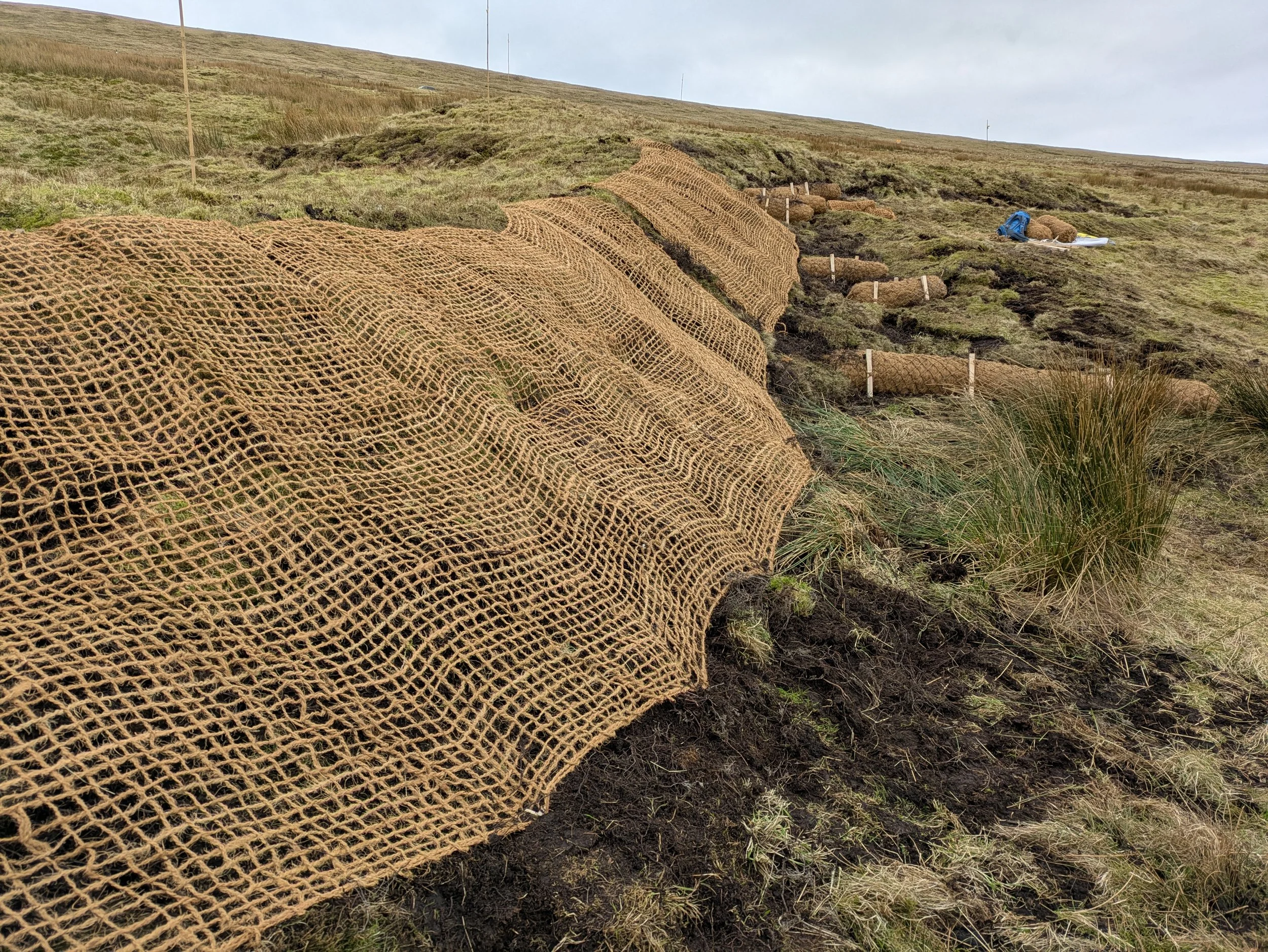A winter of restoration
It’s been a busy winter of restoration work on the hills. We have several sites ‘on the go’ and you may have noticed the diggers when driving along the mountain road. These diggers have been fitted with low ground pressure tracks to minimise damage to the peat and sensitive vegetation.
Our restoration work begins with surveying a site, mapping features such as peat hags, drainage ditches and bare peat, and recording the habitat condition. This information is used to plan what work is to be done. On most of our sites this starts with the diggers, which re-profile peat hags to a gentler angle and ‘zip’ and dam drainage ditches to slow the flow of water over the hillside. This is highly skilled work in challenging conditions.
Once the diggers have finished, there is usually some extra work to do spreading heather brash and coir netting, and installing coir logs. Before this can be done, however, the materials need to be taken onto the site and this requires a LOT of effort! We haven’t used helicopters like more remote peatland projects. Instead we have an all-terrain vehicle to deliver materials as close as possible, although it’s not always very close, due to boggy ground and sensitive vegetation. We then rely on man (and woman) power to carry or roll them the rest of the way. Our team no longer needs to visit a gym to stay fit and strong!
Heather brash is spread on areas of bare peat and sometimes covered with coir netting. This protects the peat from the weather and creates conditions to allow plants to grow. Coir logs are sometimes needed to slow the flow of water in drainage ditches, reducing erosion, trapping sediment and keeping the peat wet. They can also be used to protect the base of the re-profiled peat hags before they become revegetated.
The photos below show a hag / gully before work, after the digger, and after the heather and coir materials have been installed.



